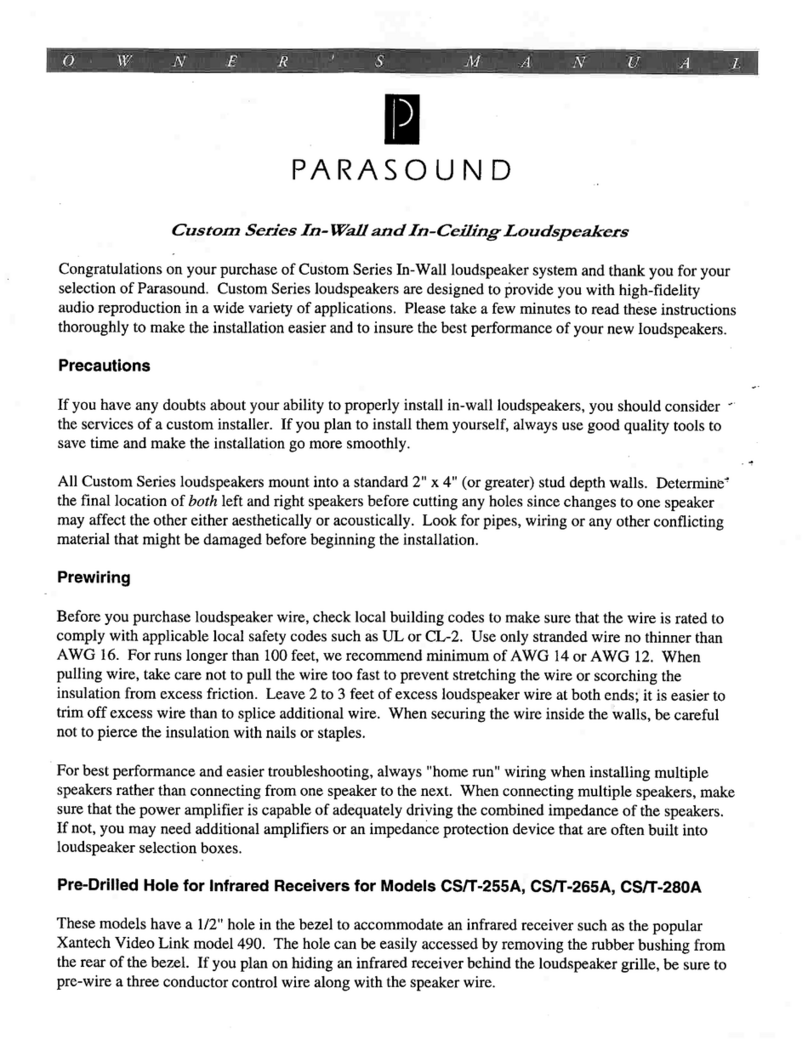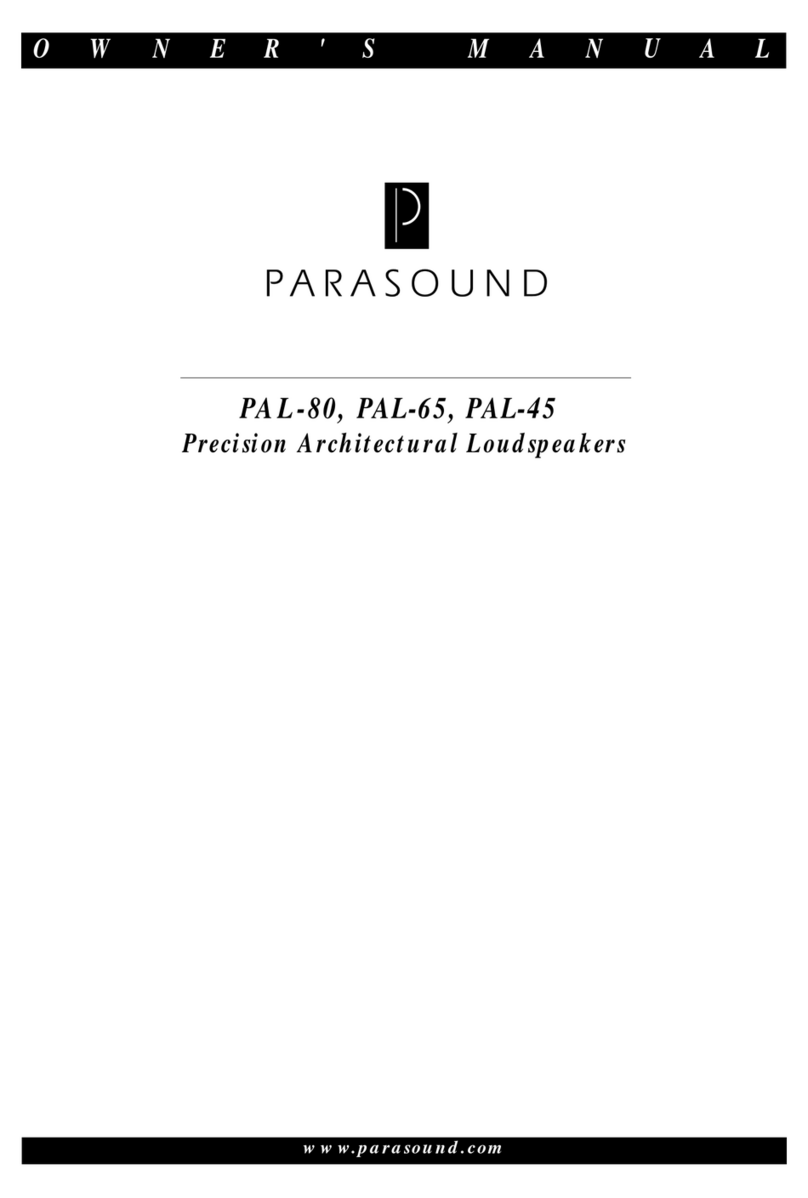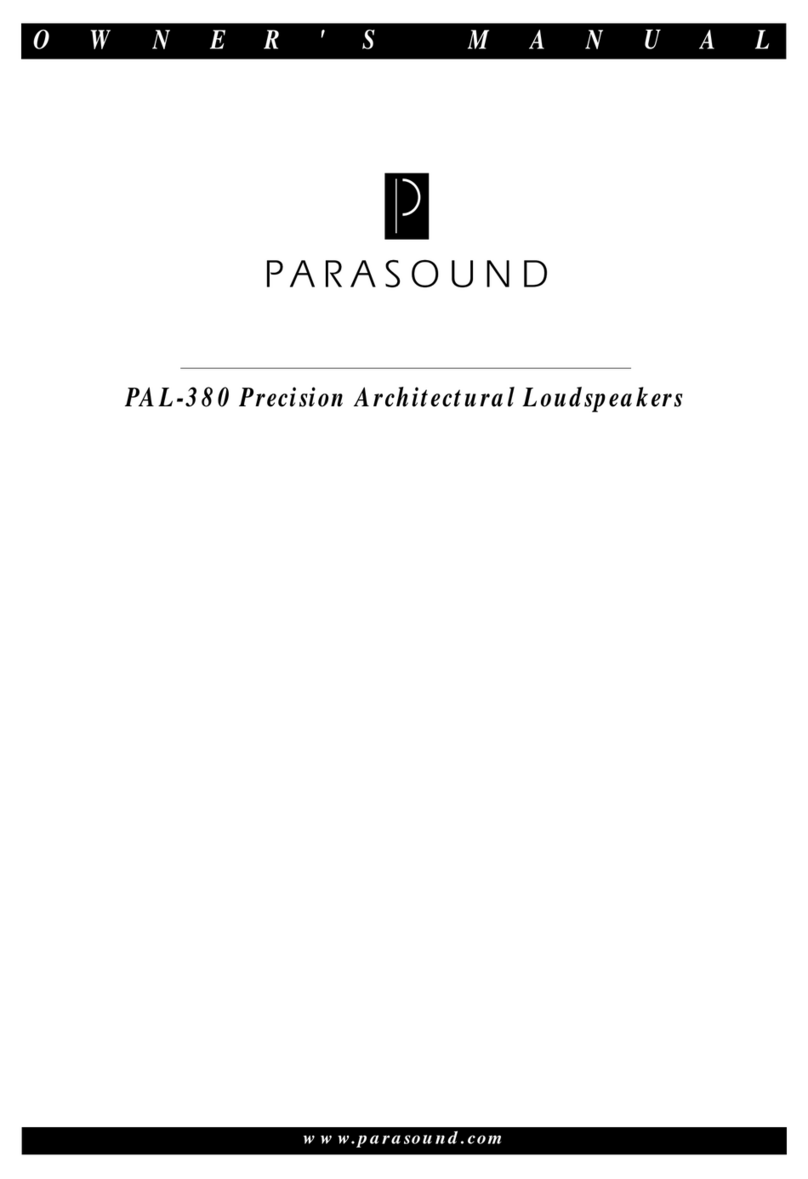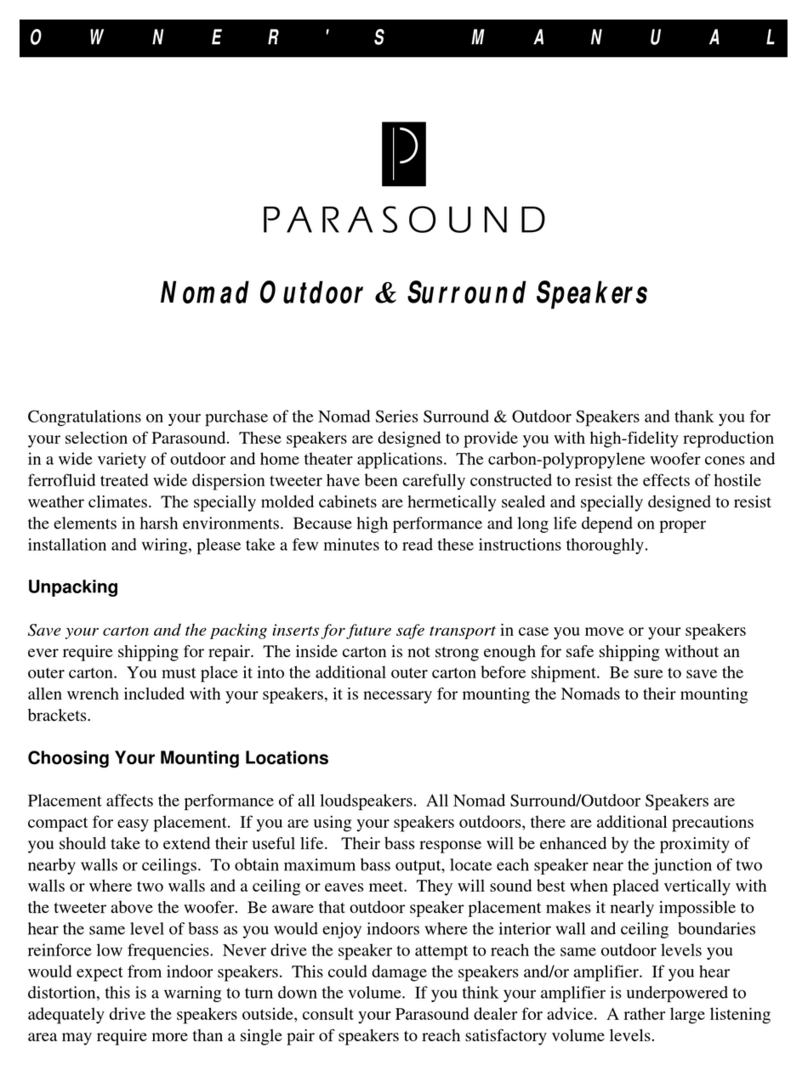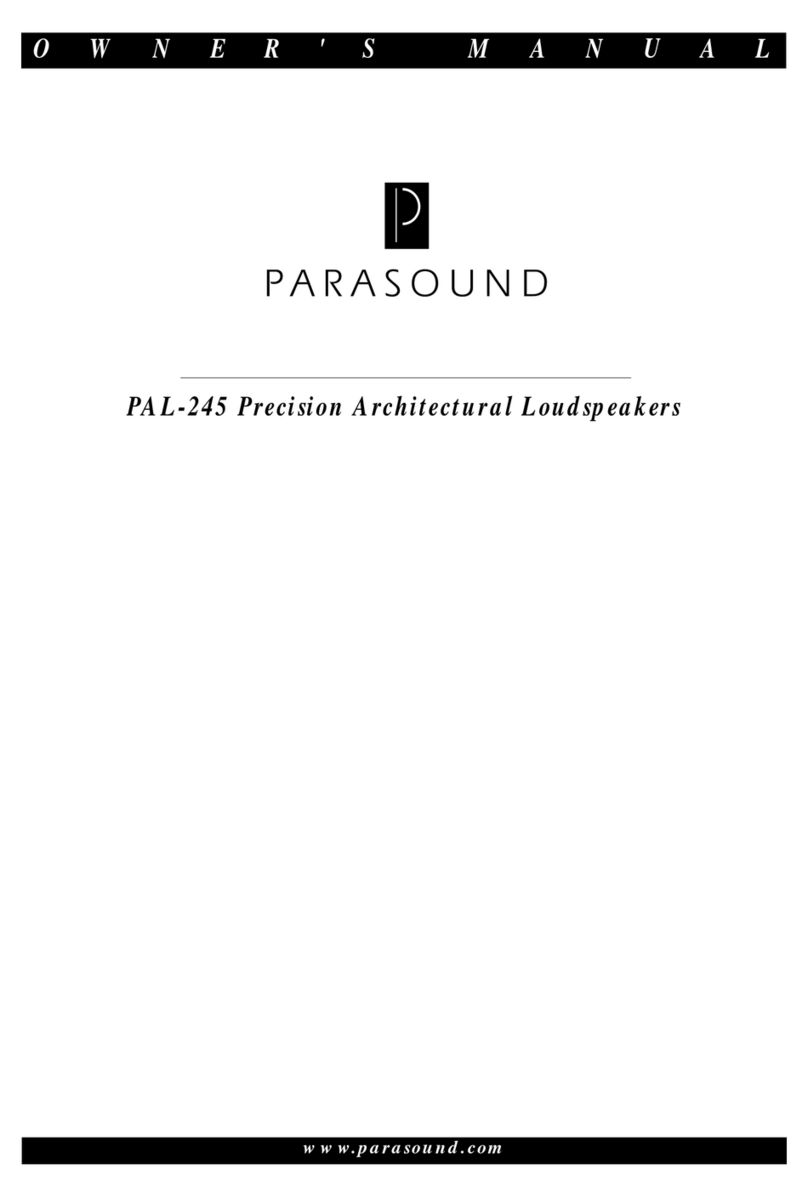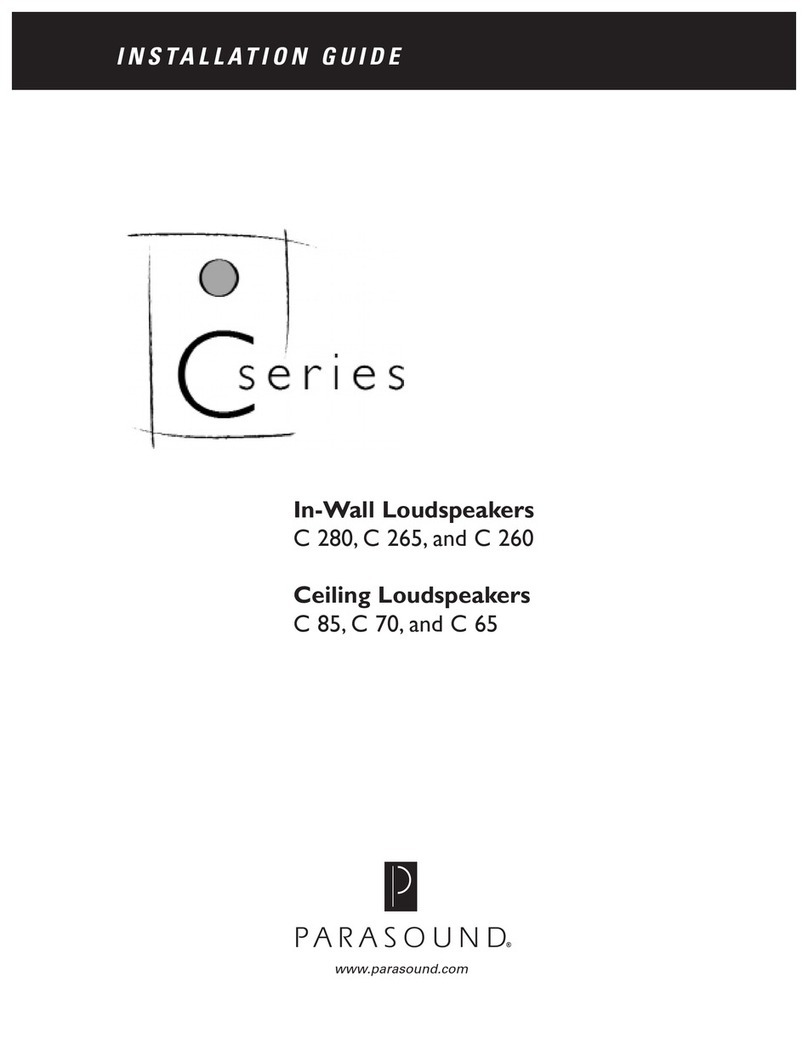3
For best performance and easier troubleshooting, always “home run” wiring when installing
multiple speakers rather than connecting from one speaker to the next. When connecting
multiple speakers, make sure that the power amplifier is capable of adequately driving the
combined impedance of the speakers. If not, you may need additional amplifiers or an
impedance protection device that are often built into loudspeaker selection boxes.
Mirror Image TweeterAssembly
The PAL-280 tweeter assembly is mirror imaged so you can position them for best sonic
imaging. Ideally, the listening position should be at one point of an equilateral triangle with
theleftand right speakers positionedattheother two points. Ifyouneedto mount the speakers
outsidethis idealized equilateral triangle,position the tweeters towardthemiddle. If youneed
to mount the speakers inside this idealized equilateral triangle, position the tweeters toward
themiddle.
Installing the PAL-280 Precision Architectural Loudspeakers
1. Confirm that there is at least 1 1/2" of clearance between each edge of the planned
cutout and adjacent studs or joints.
2. Fasten the supplied cardboard template to the wall or ceiling with tape or thumbtacks.
Check again for equal distance of both speakers from the ceiling or floor.
3. Use a level or the included template’s self-leveling feature to so the cutout will be level.
4. Trace around the perimeter of the template.
5. Before making the final cutout, make a small 6-inch square “test cutout” in the center of
the penciled outline. Reach inside the test hole to verify that there are no obstructions in
the way of your planned cutout.
6. Before cutting the hole, first score the drywall with a razor knife and use a keyhole saw
to complete the cut. Remove debris from the edge of the hole.
7. Secure the speakerwire to a studnear the cutoutso its weightwill not tug onthe terminals
of the speaker after it is connected. This also keeps the wire from dropping behind the
wall before you can connect it.
8. Terminate the speaker wire with 1/4" spade lugs or banana plugs. You can also insert
bare wire up to AWG 12 into the holes on the sides of the binding posts.
9. Carefully separate the removable bezel from the baffle and loudspeaker assembly. The
bezel can be mounted in the wall and painted if desired while the main part of the
loudspeaker is stored away safely until you are ready to mount it. Note: The grilles
should be painted separately rather than while mounted in the separate bezel.
10. Insert the PAL-280 bezel into the cutout to make sure it fits easily without forcing.
11. Evenlytightenthemountingscrewsonthebezel.Themounting“swing-arms”(alsoknown
as mounting “dogs”) will automatically swing out 90 degrees.After they swing out, the
armsthen clamp againstthe drywall frombehind the wall.Avoidusingexcessive force to
prevent deforming the drywall or cracking the speaker’s mounting frame.
12. We recommend that you add a “blanket” of sound absorbing material such as ceiling
insulation behind the woofer to reduce sound transmission into the adjoining room.
Additionally, any sound leakage from behind the molded frame can be blocked with
foam weather-stripping directly behind the plastic speaker bezel.
13. Install the main loudspeaker assembly into the bezel.
14. Install the six rubber shoulder washers into the holes in the bezel
15. Use the six supplied #8 x ∫” screws to fasten the loudspeaker assembly into the bezel.
